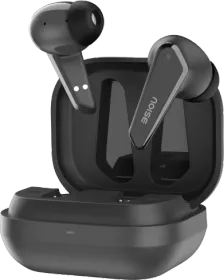In certain situations, such as during lengthy meetings or when you need to focus on a task for several hours, it can be beneficial to minimize interruptions from phone calls. To ensure you do not miss any important calls during these times, utilizing the call forwarding feature is an effective solution. This feature provides the flexibility to redirect calls, allowing you to stay connected even when you are traveling or away from the office. It can forward calls from your work phone to your mobile device for after-hours accessibility. Additionally, it serves as a backup for your business’s main line, redirecting calls to an alternative location if the primary number is unavailable.
In this story, we will discuss enabling/disabling calls on Android phones and iPhones.
ALSO SEE: How to Take Jaw-Dropping Macro Photos with the OPPO Find X8 Pro
What exactly does Call Forwarding do?
Call Forwarding is a telecommunications feature that enables users to redirect incoming calls to a different phone number. This functionality is commonly utilized to send calls to an office line, a colleague’s phone, or a home number when there is uncertainty regarding one’s availability to answer calls.
Call Forwarding has gotten advanced
Earlier call forwarding used to be a simple feature that was either switched on or kept off. Now with new technologies, complexity has improved and there are various rules that can be used to set up call forwarding. These include-
- The person might enable call forwarding for a specific caller(s), phone number(s), area code(s), or country code(s).
- The enabler can decide the timing of calls that have to be forwarded. This means, one might want all the calls he/she gets between 2 PM IST to 4 PM IST every day to be forwarded, so he can choose to do so. Other than time, he can also choose specific days of the week.
- Call forwarding can be allowed when your own line is busy.
- It can even be allowed if you don’t answer a call.
ALSO SEE: How to Use DMRC’s Momentum 2.0 Delhi Sarthi App to Book Metro Tickets
How to enable call forwarding on Android Smartphones
- Launch the ‘Settings’ app on your Android phone.
- Use the search bar on the top and key in the words ‘Call Forwarding’. You will get the option to open the call forwarding settings menu.
- If you use two SIM cards, choose the one you want to enable call forwarding on.
- Choose ‘Voice’ or ‘Video’ to allow call forwarding.
- You will get four options to enable call forwarding.
- Choose the desired option and enter the number to which you want to forward your call.
- Tap on ‘Turn On’ and call forwarding will be enabled.
Call Forwarding Options are-
- Always Forward– all incoming calls will be forwarded.
- When Busy– calls will be forwarded when the line is busy.
- When unanswered- calls are forwarded when you don’t answer them.
- When unreachable– calls are forwarded when your phone is off or out of service.
Note- The Call Forwarding settings might be different on different Android phones. If not in the settings menu, some smartphones have the option in the ‘Phone Menu’ as well.
ALSO SEE: How to Check the AQI of a place using Google Maps in India
How to disable call forwarding on Android Smartphones
- Launch the ‘Settings’ app on your Android device.
- Open the call forwarding settings menu.
- Choose the SIM and type of call menu.
- Tap the Call forwarding settings and you will see the number of calls that are being forwarded.
- Tap on it and choose the ‘Turn off’ option to disable the settings entirely.
How to enable/disable call forwarding on Apple iPhones

- Go to the ‘Settings’ app on your iPhone and tap on Phone.
- Look for ‘Call Forwarding’ and tap on the toggle to turn it on or off.
- If you are enabling it, enter the call forwarding number where you want calls forwarded and then tap back to save it.
- Some phone carriers indicate call forwarding by using a phone icon with a curved arrow pointing away from it.
Using Codes to Start/Stop Call Forwarding
Another method to start or stop call forwarding on Android Phones and iPhones is to use codes. These call-forwarding codes can be entered using a dialer pad to enable/disable call-forwarding settings.
- *21*Phone Number# for Always Forwarding Calls
- *67*Phone Number# for Call Forwarding When Busy
- *61*Phone Number# for Call Forwarding when one doesn’t answer
- *21*Phone Number# for Call Forwarding when the phone is off or out of service area.
To use these codes, open the dialer pad and enter the code by replacing the phone number with the actual number you want to forward calls to and then press the ‘Call’ button.
The code for stopping call forwarding is ##002#.
ALSO SEE: How to Download GIFs from X/Twitter on your Mobile or Laptop
Using 3rd Party Apps to Enable/Disable Call Forwarding

Some people might want an even easier way to enable/disable the call-forwarding feature on their devices. There are various third-party apps which are safe and easy to use. Some third-party apps that can be accessed via the Google Play store are-
- Call Forwarding App by Android Buddy
- Call Forwarding App by CT App Maker
- Call Forwarding -Call Diver by HeloWorld
- Call Forwarding Pro App
The standard process to use the third-party app is-
- Download the app from the app store.
- Open the Easy Call Forwarding app.
- Grand necessary permissions.
- Hit Allow.
- Select Configure. Enter the destination number and choose your provider. Hit ‘save’.
- Toggle call forwarding on/off.
Note- the process might vary slightly depending on the apps.
ALSO SEE: Apple Intelligence India: How to Access on iOS 18.1
Benefits of Call Forwarding Feature
Call Forwarding feature can prove to be a lifesaver at times. It is extremely useful in various situations. Its advantages are-
- Never miss important calls- Call forwarding ensures that you will never miss any important call from your client, even if the staff is not in the office. Earlier landline phones did record messages, but those could be accessed when one arrived at his desk. With call forwarding on smartphones, even if one employee can’t the other one can attend the important call and keep others in the loop of what’s happening. This even helps from working from home.
- Cost-effective- if you use the call forwarding feature which is a part of your smartphone, you save money as it doesn’t cost anything. Otherwise, too it is much more affordable than roaming so if you are out of the station, forward the calls to someone who’s in town to attend the calls. This way you don’t have to pay to attend incoming roaming calls and neither do calls get missed.
- Ensures privacy- with call forwarding, you don’t have to worry about attending calls during personal hours. You can reroute these calls to office numbers and also set up call forwarding to stop sending calls to private numbers after certain hours or times.

Disadvantages of Call Forwarding Feature
Every smart feature that is used for convenience, does have its own share of drawbacks. Call Forwarding too has some limitations-
- Missed Calls- If the person you have forwarded calls to is unavailable, your important calls might be missed completely, leading to delays.
- Poor Call Quality- If call forwarding is being used in a VoIP system, the quality of calls might be poor due to connectivity issues. This happens when hardware and software aren’t in tandem with each other. Also, if the internet connection is poor, calls might be dropped.
- Mixing personal and professional– if you happen to use a common phone number for personal and work purposes, it might be a problem as your calls will also be forwarded along with business ones.
- Call Forwarding Scams- Scamsters these days target those numbers that enable call forwarding frequently. They can intercept calls in the middle and hack personal data like passwords, PINs, OTPs, etc whenever call forwarding is enabled.
- Manual setup needed- some traditional devices require the user to enable call forwarding every time they want to use the feature. This becomes a hassle.
- Forgetting to disable it- Sometimes, the user might forget to turn the feature off and miss important calls he/she wishes to attend on their own.
ALSO SEE: iOS 18.1 Writing Tools: How To Use The New Apple Intelligence Feature On An iPhone?
FAQs
1. Can I forward calls from Android to iPhone?
Call forwarding works at the phone number level. It doesn’t matter whether your phone is Android or iPhone. So, yes, you can forward calls from Android to iPhone, and vice versa.
2. Does one have to pay for call forwarding?
Yes, some telecom operators charge for call forwarding, others don’t. Make sure to check plans before enabling the service.
3. Will call forwarding work if one switches devices?
No, if one is using the phone’s settings for forwarding calls, it will stop working until you enable them again.
4. Which telecom operators in India support call forwarding?
Telecom operators like Jio, Airtel, Vi, and BSNL support call forwarding.
You can follow Smartprix on Twitter, Facebook, Instagram, and Google News. Visit smartprix.com for the latest tech and auto news, reviews, and guides.










































